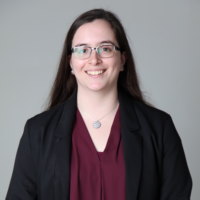
October Conferences (Digital History and Fan Studies)
Earlier this month I attended a hybrid symposium physically located in Utrecht, but with participants across Europe. As part of my ongoing commitment (to myself, mostly) to blog regularly, this post reflects on the symposium and where it has fit in my current work. I also recently participated in this year’s Fan Studies Network North America conference, and these two experiences became an opportunity to take stock while I’m more-or-less between big projects.
I gather that the symposium was the project-ending event for a substantial multi-year project with investigators across several European institutions. Most of my conference experiences so far have been with a strong Anglo-American focus (SCMS, BAFTSS, Screen, etc.) so it was genuinely lovely to connect more with European colleagues.
When I was invited to join the symposium, I considered declining because my zines work is still in development and I’m not sure how much my previous project around fanvids would fit the remit of the symposium. Despite that, I offered to share some thoughts around vidding and its relationship to history that I had previously published, alongside a newer example. It might not have been my most sparkling performance – delivered via Zoom to a room full of folks on-site – but it felt good to be connected again to work and approaches beyond what I’m typically exposed to in my day-to-day. It has been difficult to carve out time to attend virtual conferences, and to focus while I’m there, but this event was manageable and enjoyable.
It was a nice surprise to see that I was on a panel with Abby Waysdorf and Philipp Dominik Keidl, who are the editors of the forthcoming special issue of Transformative Works and Cultures on fandom and history, due to be published in March 2022. For this special issue, Nick Webber and I have returned to our previously-published work looking at the overlap of what fans do with what historians do in order to theorise ‘the fan-historian’. I am excited to be part of this special issue, and it was lovely to meet Abby and Philipp, even if it was only a brief chat through a screen. Prompted by this, I have been thinking of how this more recent theorisation could help me develop that previously-published work on vidding as historical practice.
Also, over this past weekend, I participated in the Emerging Modes of Fan Video roundtable at FSN-NA, which was entirely virtual. Our roundtable featured participants from three continents and across a range of career stages (including Sharon Kong-Perring, whose PhD project I’m currently supervising). My contribution was some preliminary findings from interviews with vidders about their perceptions of ‘emerging’ (and/or foreign) forms of fan video; these had revealed less about other forms of fan video than they had about the vidding community’s sense of its own aesthetic norms, as articulated against knowledge of other ways of working with image and sound.
After we filled our allotted time at the FSN-NA roundtable I commented that I had thought I was done with (sick of) studying vids, but that the roundtable had gone some way to breathing life back into things. This is good news because I’ve agreed to write two more pieces about vids and vidding over the next year. I am looking forward to what future connections and collaborations might come from what felt like a productive first conversation.
